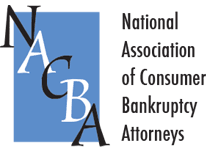121 S. Wilke Road, Suite 301, Arlington Heights, IL 60005
Home and Hospital Visits for Your Convenience
Serving Clients Across 7 Illinois Locations
Recent Blog Posts
Top 3 Tips for Avoiding a Car Accident Caused By an Aggressive Driver
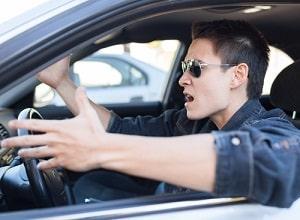
The National Highway Traffic Safety Administration (NHTSA) reports that speeding killed over 9,000 people in 2018, ranking it as a top contender among the major causes responsible for car accidents and injuries. Along with other risky driving behaviors, such as distracted driving or driving under the influence of drugs or alcohol, speeding is one of the most dangerous types of aggressive action behind the wheel. It has the potential to escalate a bad situation into something much worse very quickly. If you are involved in a vehicle collision caused by a reckless driver, you may be entitled to compensation for any damages you suffer as a result.
Reaction Is Key When Encountering a Reckless Driver
People drive aggressively for a number of different reasons. When you see another motorist who is speeding, tailgating, swerving from lane to lane, cutting people off, or otherwise driving dangerously, you may make automatic assumptions about the driver and go on the defensive, and their actions may even feel like a personal attack. Whatever is behind someone else’s reckless driving behavior, it is important to stay focused on a fast reaction instead of getting caught up in an emotional response. This will enable you to better protect yourself and everyone around you on the highway.
4 Safety Tips for Driving at Night to Avoid a Car Accident in Illinois

According to studies by the National Safety Council (NSC), despite the fact that nighttime driving represents only a quarter of all driving activity, 50 percent of all traffic fatalities occur at night, and safety behind the wheel during the twilight hours should be a crucial priority for all drivers. The chances of being involved in car accidents with injuries at night are significantly higher than at other times of day. This can be due to a number of factors, such as fatigued or intoxicated drivers. If you have been involved in a collision that was caused by another driver's negligent driving at night, you should work with a personal injury attorney to determine your options for recovering financial compensation for your damages.
What You Can Do to Decrease Your Chances of Injury
3 Major Factors That Contribute to Teenage Car Accidents

Whether you have a teen of your own who recently started driving, or you know a parent with a new teen driver in the family, encouraging roadway safety for teenagers among our community as a whole helps protect everyone on the highway from car accidents and injuries. In today’s technology-centric world, many parents, teachers, and friends assume that the number-one risk for teens behind the wheel is distracted driving, such as texting and cell phone use. While it is true that distracted driving is responsible for 25-50 percent of all accidents according to AAA, it is important to be aware that texting and talking on the phone only accounts for a fraction of risky driving behaviors. Many other forms of reckless driving exist, and these other factors often contribute to the teen-related car accident statistics we hear about.
Teen Vehicle Collisions: More Than Just Distracted Driving
Can Illinois Essential Employees Receive Workers’ Comp for COVID-19?
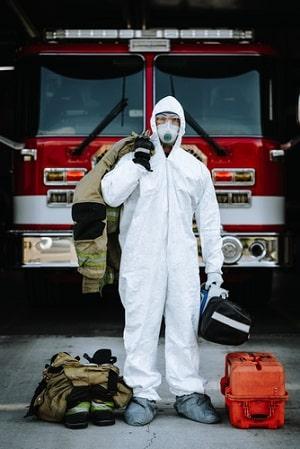
Among the ongoing developments surrounding the COVID-19 pandemic, some good news has emerged for all essential employees in the state of Illinois who are concerned about being exposed to and potentially contracting coronavirus while on the job. Thanks to recent changes in the state's workers’ compensation policies, any essential employee who contracts the virus from the workplace will be covered, based solely on his or her word. This means that workers will not be required to furnish proof that the illness came from the workplace, as they typically would under normal circumstances.
Recent Changes to Workers’ Compensation Policies
This change in policy at the very least offers essential workers some assurance that should they contract the disease while putting their lives on the line in the service of others, their illness will be taken seriously, and they will have special rights regarding workers’ compensation. If you are an essential worker, and you contract COVID-19 on the job, here is some important information regarding filing a claim:
Can Improper Seat Belt Use Increase Your Chances of Injury in a Crash?
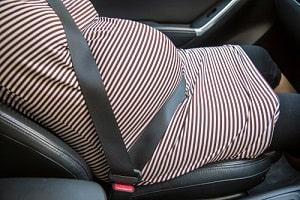
Many times, when drivers think of using a seat belt, they assume that as long as they buckle up at least some of the time, or for long-distance trips, nothing else really matters. Many drivers adopt the mentality that occasional seat belt use is ”good enough.” However, the truth is that although car accident injuries are more likely for drivers and passengers who choose not to buckle up, they can also occur for those who use their seat belts incorrectly. Yes, it is possible to wear a seat belt the wrong way, and in many cases, wearing it the wrong way can be just as dangerous as not wearing one at all.
How You Wear Your Seat Belt Matters
The National Highway Traffic Safety Administration (NHTSA) reports that drivers and passengers can reduce their chances of moderate to critical injury by 50 percent, and chances of fatality by 45 percent by buckling up, but how you buckle your seat belt matters. Here are some dangers of wearing your seat belt the wrong way:
3 Dangers That Teen Drivers Should Be Aware of to Avoid Car Accidents

Parents of new teen drivers will want to warn their teenagers of engaging in risky driving behaviors that cause car accidents and injuries. However, it is just as important to make them aware of others around them who may be driving recklessly. Instead of assuming teens are the only ones driving dangerously, a concerted effort should be made to help them observe other drivers. In addition, they should be aware of the passengers in their own vehicles. These tactics will all help them learn to drive defensively and to be a positive influence among their peers while traveling on the roadways.
Hazardous Behavior and Conditions
The National Highway Traffic Safety Administration (NHTSA) reported over 2,500 teen fatalities in the year 2017. This does not count the numbers of crashes and fatalities that affected others due to teen drivers' reckless behaviors behind the wheel. Ensure that your teen driver understands that his or her decisions as a new driver impact others by discussing the following top three dangers on the road:
4 Misconceptions About Filing a Claim After an Illinois Car Accident

More than 300,000 car accidents were reported to the Illinois Department of Transportation (IDOT) in 2017. Nearly a quarter of them resulted in injuries, and just under one percent involved fatalities. Every affected party has the right to pursue full compensation for their losses, but far too many have their claim denied or reduced because of actions or inactions that took place after the crash. In order to prevent yourself from becoming just another collision victim who lost out on potential compensation for pain and suffering, it is important to understand how you can increase your chances of receiving everything you may be entitled to. This starts with familiarizing yourself with some common misconceptions about filing a claim after a vehicle crash.
Auto Accident Claim Myths
How Legionnaires’ Disease Transmission Can Impact Your Health
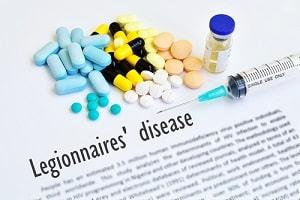
A common cause for personal injury cases and medical negligence lawsuits, Legionnaires’ disease, originally discovered back in 1976, still continues to cause health problems nationwide due to building maintenance negligence and misdiagnosis within the healthcare community. The Centers for Disease Control and Prevention (CDC) reports that 1 out of 10 people who contract Legionnaires' dies from the disease, and health departments recorded approximately 10,000 cases in the United States in the year 2018 alone. While these numbers represent official cases, experts say these statistics are not entirely accurate, as many new cases remain undiagnosed. If you fear you or your loved one has recently been exposed to the bacteria responsible for Legionnaires’ disease, it is important to understand how the disease is transmitted and how your health may be affected.
What Damages Can I Sue for if I Contracted Legionnaires’ Disease?

First discovered following a 1976 outbreak at an American Legion convention in Philadelphia, Legionnaires’ disease left affected attendees with serious lung infections -- a type of pneumonia -- caused by bacteria known as Legionella. Research has shown that this bacteria grows in poorly managed water systems, often due to negligence on behalf of a building’s owner, such as those who own a nursing home facility that houses a complex water system. When mist from this infected water is inhaled, through showers or hot tubs, for example, residents can contract Legionnaires’ disease, posing grave risks to their health. The same bacteria that causes this disease was also responsible for cases of Pontiac fever that occurred in Michigan during the 1960s.
The Prevalence of Legionnaires’ Cases Today
Although the disease earned its name back in the 1970s, cases of Legionnaires’ disease are still very prevalent today. The number of cases has fluctuated over time, but the Centers for Disease Control and Prevention (CDC) reported there were nearly 10,000 cases in the United States in 2018. The CDC has also stated that this number is likely a misrepresentation of the actual number of people affected by the disease, as many cases are undiagnosed.
Can I Sue if I Got Legionnaires’ Disease from a Hotel or Nursing Home?

Named after a 1976 outbreak at an American Legion meeting, Legionnaires’ disease is a type of bacterial pneumonia brought on by inhaling mist in the air that is contaminated with Legionella bacteria. This bacteria is typically carried through water systems and air conditioning ventilation systems, and according to the Centers for Disease Control and Prevention (CDC), it is deadly to 1 in 10 people who contract the disease. Diagnosis sometimes emerges following medical malpractice or due to building maintenance negligence by the property owner, especially in hotels, resorts, and long-term-care facility settings, which are common environments for outbreaks.
Modes of Transmission and Diagnosis
Unlike some conditions, Legionnaires’ disease is not transmitted from person to person, so it cannot be contracted from interacting with someone who carries the bacteria. However, the circumstances surrounding how you picked up the bacteria and how or when you were diagnosed can all make a significant difference in your case when it comes to pursuing compensation for the damage to your health and the expenses you incurred because of the disease.

 Spanish
Spanish



